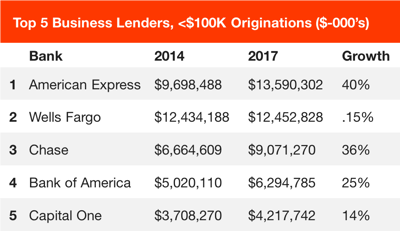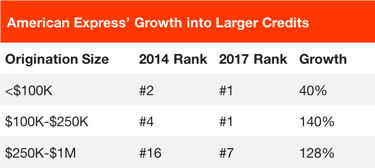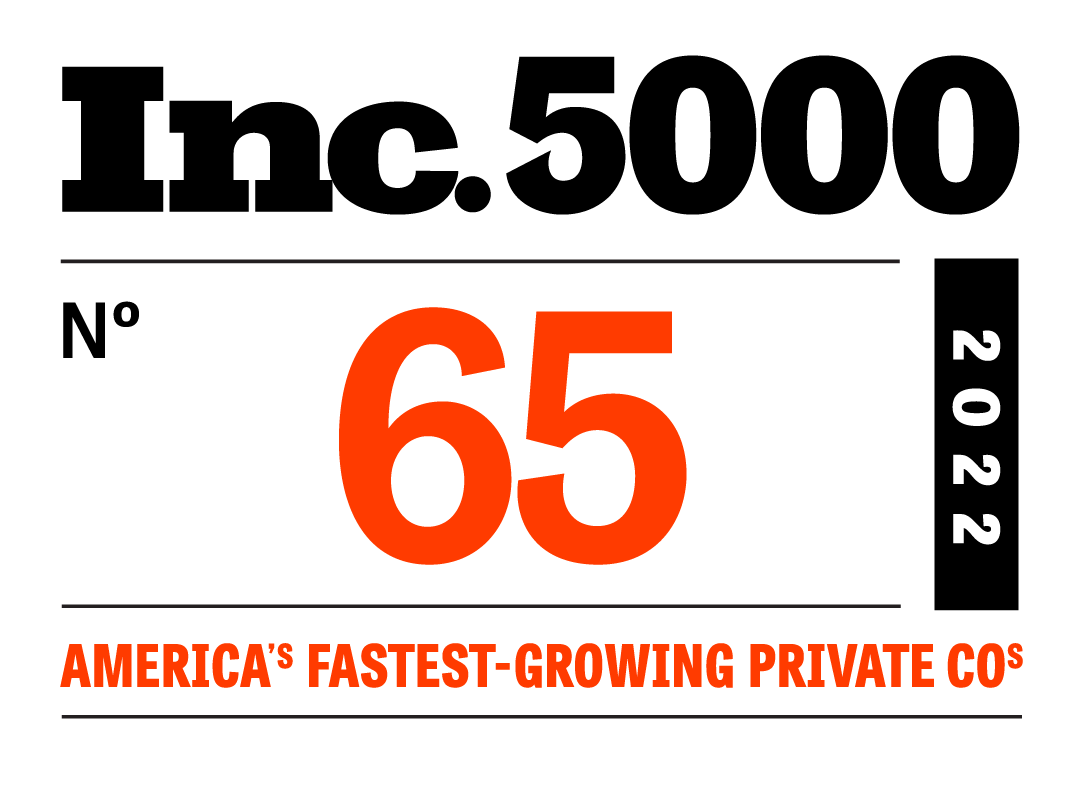
A shift to all things digital is changing the face of business banking, forcing relationship banks to make critical decisions about their business lending strategies.
This shift is backed by data. The Federal Financial Institutions Examination Council (FFIEC) released its annual Community Reinvestment Act (CRA) report for the 2017 calendar year in November. The origination data within this report offers insight into the business lending performance of banks of all sizes.
Based on an analysis of this data, one thing is clear: megabanks with digital business lending capabilities continue to pull away from banks without these capabilities.
The CRA data shows that just five banks originate more than half (54%) of business loans of less than $100K in the United States. All have grown these small business originations in recent years, and all (with the exception of Wells) achieved double-digit growth.

What do these banks have in common? They all have invested in digital lending capabilities that offer business owners a faster, more convenient way to secure financing.
Another clear trend in the CRA data is the growth of these large banks in larger business loans of up to $1M. American Express, in particular, has achieved 125%+ growth in originations of up to $1M.
The CRA data shows that in just three years, American Express jumps from being the second largest lender of <$100K originations to the largest; from the fourth largest lender of $100K-$250K originations to the largest; and from the sixteenth largest lender of $250K-$1M originations to the seventh largest.

Not shown in the CRA origination data is how national banks like American Express are leveraging the loan relationship to cross-sell additional business banking products such as deposits, treasury, merchant services, and even consumer products. Digital lending is being used as the “tip of the spear” for expanding share of wallet with business owners.
If local banks and credit unions do not make a change to address the digital convenience business owners are demanding, they should expect to continue to see a loss of share to banks that do. This is concerning not only for the <$1M loans on their balance sheet, but because of the full relationship value these business owners bring to local banks in the form of deposits and other services and fees.
Understanding business lending trends in your market
The national trends highlighted in this post are also happening in local markets, from coast to coast and in both urban and rural communities.
While national data is helpful to understand aggregate trends, an analysis of business origination data within a bank or credit union's local market(s) offers more meaningful strategic benchmarks and actionable insights.
- How are the big national banks performing in your market with businesses?
- Are businesses in your market switching banks for the convenience of digital lending?
- Where does your bank stand competitively in terms of market share and growth rates in business lending?
- How does your deposit and lending performance compare?
Get more insights on trends like these by registering for one of our upcoming webinars.






